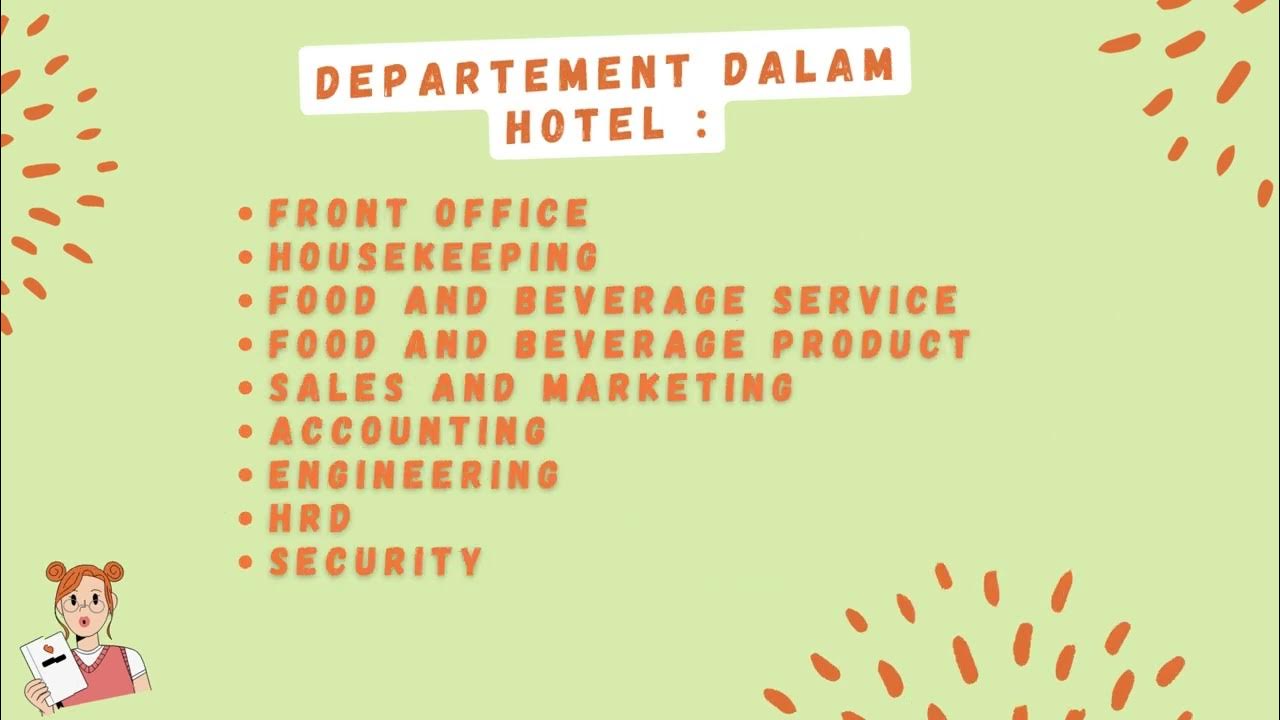MENGENAL TEKNOLOGI KANTOR
Summary
TLDRThis lesson, led by Lia Amalia, introduces office technology to 10th-grade students. It covers basic competencies such as understanding office automation and virtual offices. The session explores key concepts, including office technology applications, automation, and virtual office characteristics. It highlights office tools like word processing, email, voicemail, and video conferencing. It also discusses the benefits and roles of office automation, such as improving productivity and communication. The lesson concludes by explaining virtual office features, components, strategies, and flexible work models like telecommuting.
Takeaways
- 📚 Office technology is an essential subject for grade 10 students, focusing on automation and virtual offices.
- 💻 Office technology involves the application of machines to handle office tasks efficiently, such as processing, distributing, and storing information.
- 🤖 Office automation replaces manual tasks with machines, improving efficiency by reducing human supervision.
- 🧑💼 Users of office automation include managers, professionals, secretaries, and administrative staff, each with specific roles.
- 💼 The goal of office automation is to enhance efficiency and reduce costs while improving communication and document handling.
- ✉️ Common office automation applications include word processing (e.g., Microsoft Word), electronic mail, voicemail, and electronic calendars.
- 📱 Audio and video conferencing are key tools in office automation, allowing real-time communication regardless of location.
- 🌐 Virtual offices, or remote offices, enable work without a physical location, increasing flexibility, reducing costs, and improving productivity.
- 🔗 Virtual offices rely on collaboration across boundaries, resource sharing, and complex organizational structures.
- 🚀 The success of virtual offices depends on providing necessary technology resources, scheduling regular meetings, and maintaining work routines.
Q & A
What is the definition of office technology according to the script?
-Office technology is defined as the application of technology in office activities to record, collect, process, reproduce, send, and store information efficiently using office machines.
What is office automation, and how is it different from mechanization?
-Office automation refers to using automatic tools and systems to replace manual tasks, focusing on equipment and control, while mechanization is about using and benefiting from computers.
Who are the users of office automation as mentioned in the script?
-The users of office automation include managers, professionals, secretaries, and administrative staff. Each has specific roles, such as managing resources, providing expertise, handling correspondence, and operating machines.
What are the main objectives of office automation according to Priansa and Garnida?
-The main objectives of office automation are higher income with cost reduction, solving group problems, and acting as a complement rather than a replacement for traditional communication methods.
What are some common office automation applications mentioned in the script?
-Common office automation applications include word processing (e.g., Microsoft Word), electronic mail, voicemail, electronic calendaring, audio and video conferencing, and computer conferencing.
What is a virtual office, and how does it differ from a traditional office?
-A virtual office is a workspace in the internet space where tasks are performed without a physical location, offering flexibility in time and cost while increasing productivity. Unlike traditional offices, virtual offices don't have a fixed location.
What are the key characteristics of a virtual office?
-The key characteristics of a virtual office are crossing organizational boundaries, sharing resources, being geographically dispersed, and having non-permanent members.
What are the components of a virtual office?
-The components of a virtual office include virtual knowledge workers, virtual teamwork, integrated complex networks, complex matrix structure, and a faster learning organization.
What strategies should be implemented for a successful virtual office?
-Strategies for a successful virtual office include providing computer hardware and software, access to information resources, non-computer office tools, phone systems, scheduling routine meetings, and committing to specific working hours.
What are the two main forms of virtual office described in the script?
-The two main forms of virtual office are 'hotelling,' where a central facility is shared by employees, and 'telecommuting,' where employees work entirely from home, enjoying flexible location and working conditions.
Outlines

Dieser Bereich ist nur für Premium-Benutzer verfügbar. Bitte führen Sie ein Upgrade durch, um auf diesen Abschnitt zuzugreifen.
Upgrade durchführenMindmap

Dieser Bereich ist nur für Premium-Benutzer verfügbar. Bitte führen Sie ein Upgrade durch, um auf diesen Abschnitt zuzugreifen.
Upgrade durchführenKeywords

Dieser Bereich ist nur für Premium-Benutzer verfügbar. Bitte führen Sie ein Upgrade durch, um auf diesen Abschnitt zuzugreifen.
Upgrade durchführenHighlights

Dieser Bereich ist nur für Premium-Benutzer verfügbar. Bitte führen Sie ein Upgrade durch, um auf diesen Abschnitt zuzugreifen.
Upgrade durchführenTranscripts

Dieser Bereich ist nur für Premium-Benutzer verfügbar. Bitte führen Sie ein Upgrade durch, um auf diesen Abschnitt zuzugreifen.
Upgrade durchführenWeitere ähnliche Videos ansehen

PKK Fase F Kelas XI - Perencanaan Produksi (Part 1: Ruang Lingkup Perencanaan Produksi)

Materi Pengenalan 2 Mapel Produktif Kelas X OTKP

PCK Topik Besaran dan Satuan Bagian 1

#1 PENGENALAN DASAR TEKNOLOGI KOMPUTER JARINGAN DAN TELEKOMUNIKASI

Unsur Karya Ilmiah || Kelas XI Semester Genap

MATERI PEMBELAJARAN MAPEL DASAR KEJURUAN PERHOTELAN "BISNIS HOTEL"
5.0 / 5 (0 votes)
